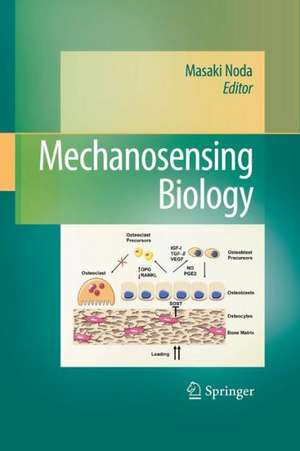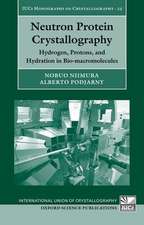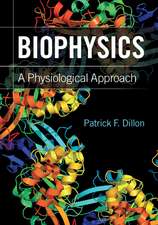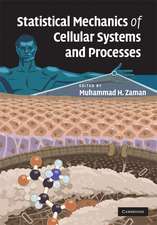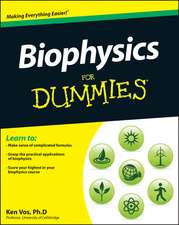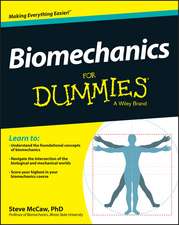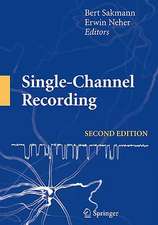Mechanosensing Biology
Editat de Masaki Nodaen Limba Engleză Paperback – 11 oct 2014
| Toate formatele și edițiile | Preț | Express |
|---|---|---|
| Paperback (1) | 941.68 lei 43-57 zile | |
| Springer – 11 oct 2014 | 941.68 lei 43-57 zile | |
| Hardback (1) | 948.16 lei 43-57 zile | |
| Springer – 2 feb 2011 | 948.16 lei 43-57 zile |
Preț: 941.68 lei
Preț vechi: 1148.40 lei
-18% Nou
Puncte Express: 1413
Preț estimativ în valută:
180.25€ • 195.85$ • 151.51£
180.25€ • 195.85$ • 151.51£
Carte tipărită la comandă
Livrare economică 21 aprilie-05 mai
Preluare comenzi: 021 569.72.76
Specificații
ISBN-13: 9784431546467
ISBN-10: 4431546464
Pagini: 236
Ilustrații: XIII, 219 p.
Dimensiuni: 155 x 235 x 12 mm
Greutate: 0.34 kg
Ediția:2011
Editura: Springer
Colecția Springer
Locul publicării:Tokyo, Japan
ISBN-10: 4431546464
Pagini: 236
Ilustrații: XIII, 219 p.
Dimensiuni: 155 x 235 x 12 mm
Greutate: 0.34 kg
Ediția:2011
Editura: Springer
Colecția Springer
Locul publicării:Tokyo, Japan
Public țintă
ResearchCuprins
-Part I Cells and Signals. -1. Nanotechnology in Mechanobiology: Mechanical Manipulation of Cells and Organelle While Monitoring Intracellular Signaling. -2.Molecular Mechanisms Underlying Mechanosensing in Vascular Biology. 3.Mechanobiology During Vertebrate Organ Development.
-Part II Tissue and Gravity. -4. Mechanobiology in Skeletal Muscle: Conversion of Mechanical Information into Molecular Signal. -5. Mechanobiology in Space. -6. Mechanical Stress and Bone. -7. TRP Channels and Mechanical Signals.
-Part III Skeletal Response. -8. Osteoblast Biology and Mechanosensing. -9. Osteocytes in Mechanosensing: Insights from Mouse Models and Human Patients. -10. Osteocyte Mechanosensation and Transduction. -11. Mechanosensing and Signaling Crosstalks. -12.Osteoblast Development in Bone Loss Due to Skeletal Unloading.
-Part IV Bone Signaling. -13. Mechanosensing in Bone and the Role of Glutamate Signalling. -14. Osteoclast Biology and Mechanosensing
-Part III Skeletal Response. -8. Osteoblast Biology and Mechanosensing. -9. Osteocytes in Mechanosensing: Insights from Mouse Models and Human Patients. -10. Osteocyte Mechanosensation and Transduction. -11. Mechanosensing and Signaling Crosstalks. -12.Osteoblast Development in Bone Loss Due to Skeletal Unloading.
-Part IV Bone Signaling. -13. Mechanosensing in Bone and the Role of Glutamate Signalling. -14. Osteoclast Biology and Mechanosensing
-Part II Tissue and Gravity. -4. Mechanobiology in Skeletal Muscle: Conversion of Mechanical Information into Molecular Signal. -5. Mechanobiology in Space. -6. Mechanical Stress and Bone. -7. TRP Channels and Mechanical Signals.
-Part III Skeletal Response. -8. Osteoblast Biology and Mechanosensing. -9. Osteocytes in Mechanosensing: Insights from Mouse Models and Human Patients. -10. Osteocyte Mechanosensation and Transduction. -11. Mechanosensing and Signaling Crosstalks. -12.Osteoblast Development in Bone Loss Due to Skeletal Unloading.
-Part IV Bone Signaling. -13. Mechanosensing in Bone and the Role of Glutamate Signalling. -14. Osteoclast Biology and Mechanosensing
-Part III Skeletal Response. -8. Osteoblast Biology and Mechanosensing. -9. Osteocytes in Mechanosensing: Insights from Mouse Models and Human Patients. -10. Osteocyte Mechanosensation and Transduction. -11. Mechanosensing and Signaling Crosstalks. -12.Osteoblast Development in Bone Loss Due to Skeletal Unloading.
-Part IV Bone Signaling. -13. Mechanosensing in Bone and the Role of Glutamate Signalling. -14. Osteoclast Biology and Mechanosensing
Caracteristici
Most up-to-date information in the field of mechanobiology
Cutting-edge advancements in research into locomotor and circulatory diseases
Includes an exploration of mechanosensor nanoscience, gravity and tissues, and mechanobiology in space
Includes supplementary material: sn.pub/extras
Cutting-edge advancements in research into locomotor and circulatory diseases
Includes an exploration of mechanosensor nanoscience, gravity and tissues, and mechanobiology in space
Includes supplementary material: sn.pub/extras
